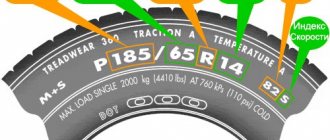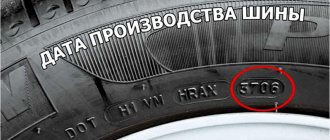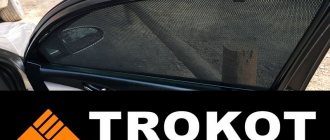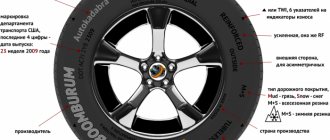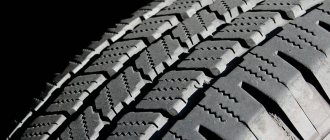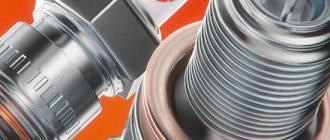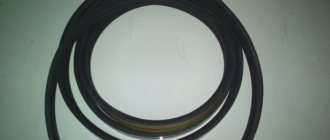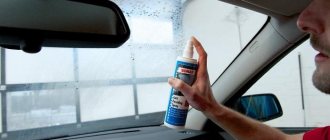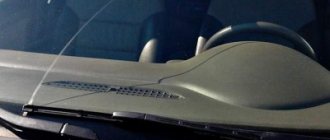Author: Evgeny Zhivoglyadov. Publication date: September 19, 2022. Category: Automotive equipment.
The question of changing a vehicle sooner or later arises before any motorist. Of course, everyone wants to get into a new, comfortable car fresh from the showroom, but not everyone has such a financial opportunity. Therefore, the used car market is still very popular.
Buying a used car is always associated with numerous problems. Every seller tries to hide the details of the “life” of the car, especially if the vehicle has been in an accident. Of course, the deception can be quickly revealed with a full diagnosis, but such a procedure is not cheap, and it is most often paid for by the buyer. However, it is absolutely not necessary to spend money on such a procedure, since you can understand that the car has been in a serious accident by looking at its windows. If they break, they are guaranteed to be replaced. But it is impossible to restore the factory markings. Therefore, knowing the decoding of this data, you can easily identify deception.
Today there are a huge number of manufacturers who produce auto glass. However, only a few types of materials and types of markings are used in production. So let's start looking at it in order.
Manufacturer
The most expensive products that are installed on Premium cars are manufactured by Pilkington (UK), Saint Gobain Sekurit (France), AGC (Japan) and Pittsburgh Plate Glass or PPG (USA). The most famous classes include JAAN (Poland), Guardian (USA) and Shatterprufe (South Africa). And finally, the “Economy” class is most often responsible for the companies XYG (China), China Southern Glass or abbreviated CSG (China), FYG (China), Starglass (Spain) and others.
If you look at the two markings given as an example, you can clearly see that the first version was manufactured by AGC, and the second by the French company SGS. Sometimes the car manufacturer’s logo is additionally indicated above the trademark (for example, Volvo, Skoda and others).
Healthy! If there is such a symbol, then the glass is original. When the car manufacturer's logo is missing, this indicates that the product was made in China (that is, not original).
Just below, as a rule, there are alphanumeric codes that indicate the compliance of this product with standards.
Recommendations
When choosing a car, pay attention to the production date of the glass and different markings on one or more may indicate serious problems, which on your part should necessarily lead to a more thorough further inspection of the car.
But the most interesting thing is that there are unscrupulous sellers, mostly, of course, outbid sellers who buy the chips and then restore them, remove them, that is, simply erase the date markings.
When trying to obtain information, I recommend inspecting all elements that may contain production date information, except for glass, such as seat belts. Good luck to everyone on the roads!
Source
Standards
There are two types of standards for the application of a specific glass. The American standard is designated by the symbols "DOT", "M" and "AS". The numbers after “DOT” indicate a certificate from the manufacturer (specific plant), which confirms that the product fully complies with the requirements of the US Department of Transportation. This means that using the “DOT” code it is possible to establish exactly in which country the glass was produced and by whom exactly. For example, the label below shows DOT473 and Pilkington. If we check the code “473”, we will see that the product really belongs to Guilin Pilkington, only it was made in China.
You can view all codes in the file below.
{pdf=https://avto-moto-shtuchki.ru/images/dot-markirovka-stekol.pdf|100%|500|native}
Go ahead. The symbol “M” and the numbers after it indicate the color and thickness of the glass.
One of the most important American standards is the light transmittance of the material (transparency). Depending on the numbers that come after “AS”, there are only three categories of automobile glass:
- AS1 – glass can be used as a windshield, side, etc. These are the highest quality products that meet all standards for light transmittance (at least 75%) and distortion. Therefore, they also comply with GOST of the Russian Federation.
- AS2 - glass of this type can be installed anywhere, but not as a windshield. Such products did not or could not pass the distortion test, but the light transmission functions are normal.
- AS3 – can only be used for rear side windows.
There is also a European quality standard, which can be easily identified by the letter “E” in a circle. Also next to it there may be a line that indicates “43R” and several numbers. This means that the product meets the ECE R43 European homologation standard. In order to clarify the specific country that issued the certificate, it is enough to remember the values of their table.
Healthy! There may be two codes on the glass at once, which are simultaneously responsible for compliance with American and European certificates. This means that the product has been certified (but not necessarily manufactured) in the EU for sale in the US or vice versa.
Also on the marking you can find the symbol “ССС” in a circle. This indicates that the glass was manufactured for the Chinese market and meets the quality standards of this country. If the glass was produced for European consumers, then in addition to this mark the symbol “E” will necessarily be present.
We continue to study the markings. If you look again at the picture from the example, you will notice that it also shows different labels - Lamisafe and Tempered. They will tell you what material the product was made from.
Rule for everyone
Based on the special directive 2001/92/CE, on October 30, 2001, countries belonging to the European Community adopted a procedure for labeling auto glass. Later, it automatically became mandatory for everyone, without exception, not in the countries in which car glass is produced. Based on this document, all transparent elements manufactured for cars by licensed enterprises are marked.
Automotive companies do not produce auto glass, despite the fact that they have a brand name indicating the car brand and the symbol (name) of the manufacturer. They order them. There are a large number of factories in the world that produce transparent elements, but only a few directly cooperate with car manufacturers.
Materials used
Modern glass is used using two technologies, each of which has its own characteristics.
Laminated glass
Such products are most often called “triplex” and laminated glass, since they can have several layers (usually three), which are glued together with a special film during the heating process. Both windshields and side windows and hatches can be made from this material. On the marking the words Laminated or Lamisafe will tell us about the laminated glass.
Such products have many advantages. The main advantages of “triplexes”:
- They can withstand blows more steadfastly.
- Even if an impact occurs, such glass will not shatter. A crack will appear on it, but it will not “grow”.
- If a stone hits the windshield even at high speed, it will get stuck in the polymer film and will not reach the vehicle interior. Thus, “triplex” is much safer for the driver and passengers sitting in the car.
- This type of glass is so strong that an attacker who decides to break it and get into the interior will have to work hard.
- Thanks to its multi-layer nature, this material absorbs sounds much better. For the same reasons, “triplex” retains heat longer and is heat-resistant.
Strained glass
In this case, we are talking about a cheaper analogue, which is usually called “Stalinite”. It is a standard glass that has undergone a tempering process by heating at a temperature of up to 680 degrees. Due to the fact that after strong heating the material cools, a residual compressive stress is formed. Therefore, such glasses are considered safe and resistant to sudden temperature changes.
These are single-layer products that break upon impact. However, tempered glass does not break into large fragments, but into small granules with blunt edges. But this is also considered unsafe for people in the car, so most often such windows are used as side or rear windows.
On the label they are marked with the words Therlite, Tempered, Toughened, Temperlit or the letter “T”. Also on it you can often find several oblique Roman numerals, which are located on the left side, next to the name of the manufacturer and confirmation of certification.
What is automotive glazing?
With the development of technology, vehicle speeds have also increased, and, consequently, the requirements for the quality of visibility and the ability to see the space around the vehicle while driving have also increased significantly.
Automotive glass
Automotive glass is a body element that is designed to provide the required level of visibility and perform a protective function. The glass protects the driver and passengers from headwinds, dust and dirt, precipitation and stones flying off from under the wheels of other moving cars.
The main requirements for auto glass are:
- Safety.
- Strength.
- Reliability.
- Sufficient service life of the product.
Glass type
Oblique (can be even) sticks, as in the picture, will tell you about the features of the glass:
- I - indicates that the glass is compacted and made for use as a windshield;
- II – standard multilayer material (even if the glass does not indicate that it is “triplex”, you can be guided by this sign, since it indicates the material of manufacture);
- III – “triplex” treated with additional materials;
- IV – the product is made of plastic;
- V – glass cannot be installed as a windshield, since its light transmittance does not even reach 70%;
- VI is a two-layer material that is used for all windows except windshields.
Under all the described symbols there is information about the month and year of production of the car.
How to find out the year of manufacture of a car
Before concluding a purchase and sale agreement for a used car, it is important to find out the production date of the car. This procedure will help to identify attempts at deception on the part of the seller of the vehicle and draw a conclusion about the rationality of the intended purchase. Today “Autocode” will tell you about the methods by which you can determine when a car was produced.
Date of manufacture
Unfortunately, there is no standard rule according to which this useful information would be indicated. However, there are three methods that factories use when indicating the date and month of production of a product on the label:
- In the first case, two numbers are indicated, separated by an oblique stick or dot. Everything here is extremely simple. The first two characters indicate the year of production, and the second - the month. Accordingly, the glass in the first image appeared in January 2005.
- The situation is more complicated if the numbers form a kind of pyramid and can be located at different distances from each other (second picture). In this case, the symbol located at the very top indicates the year of production. Accordingly, this glass was manufactured either in 2008 or 1998. To make a more precise determination, you can find information about the year the production of a specific generation of cars began. It always changes every 10 years, so determining the exact year is not difficult. The numbers in the second row of the “pyramid” (there may be several of them) add up to each other. In our case, it is simply 8. It indicates the month of glass production - August. The third line is responsible for the day of the month. We add the numbers 20+1+8 and get 28. This means that the glass was produced on August 28, 2008, or possibly 1998.
- The third picture has dots and the number 1. This indicates that the glass was produced in either 2001 or 1991. If you count the dots, you get 3. This means that the month of manufacture is March. If the dots were after the number 1, then you would need to count them and add 6, then you would get September.
We've sorted out the basic and most common marking symbols. But there are often additional incomprehensible symbols on the glass.
Types of automobile glass and their interpretation
Typically there are two types:
- Stalinite or Staling (the name of the manufacturing method) is manufactured at a temperature of 600 degrees Celsius and followed by rapid cooling. Such glass becomes strong precisely thanks to this heating-cooling process, but when broken it crumbles into many small pieces.
- Triplex - Essentially, this is multilayer glass, between the layers of which a special glue is poured that connects these layers; when such glass is hit, a crack usually forms and the glass does not spill out, even if it breaks through a hole in it, the glass will still retain its shape and will not collapse. small pieces like steel
Additional markings
Sometimes manufacturers do not indicate standard symbols that indicate the quality of the glass, replacing them with images (both options may be indicated). Therefore, it will be useful to know what such pictures mean.
The decryption will be as follows:
- 1 – indicates that the glass has sound absorption;
- 2 – side glass is made of “triplex”;
- 3 – the glass is equipped with built-in heating;
- 4 – anti-reflective coating, which reduces reflection by more than 40%;
- 5 – “chomeleon” - in addition to the standard film, a material containing silver was used in production (thanks to this, it is possible to dissipate up to 75% of thermal energy);
- 6 – side glass has higher strength;
- 7 – water-repellent effect;
- 8 – there is a built-in antenna;
- 9 – indicates that the glass is equipped with a UV filter (on a sunny day, the car interior will not turn into a brazier).
Also, glass often has a matte number (often there are “stars” on the edges of it). This is a special anti-theft marking in the form of an individual VIN number, which must correspond to the number of the body and engine of the car. If there is such a sign and it differs in numbers from the engine, then most likely the glass is “not original”.
Communities › Mitsubishi Lancer Club › Blog › How to determine the year of manufacture by looking at the glass?
Hello everyone! I think that many will be interested in knowing. How to determine and what do the symbols on the glass mean? Usually you can see the year of manufacture on the vases. But what’s here?
Comments 24
I'll join. By the code on the glass you can only find out... the year of manufacture of the glass
The car's release date can be read by the code on the label under the hood. The glass is not necessarily produced in the same year as the car's release. It happens that the parties of the end of the year are actually placed under the future already.
It turns out that the production date of the glass does not always coincide with the production date of the car. Last year I saw this on a friend’s new Qashqai
There is no production date on our original glass, so don’t solve the puzzles.
Yes, the month is the number of dots and the number on the glass is the year of manufacture but not on this glass
So we seem to be talking about this glass, I have the same markings, no dots, no years:(((
I don't know, when I was in Vladik I drank Asahi beer, excellent beer, but I haven't heard about glass. so sorry))
but I thought it was a good company like “About the company
The brand of beer was like that, I don’t argue, I even brought it with me, in aluminum bottles, not in cans but in buns for 0.33
it’s clear who’s off to the forest, who’s off to pick mushrooms...
There is no production date on our original glass, so don’t solve the puzzles.
Source
